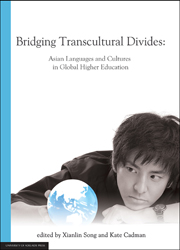Book contents
- Frontmatter
- Contents
- Acknowledgements
- List of Contributors
- Foreword
- Part I Another pedagogy is possible
- Part II Re-locating teaching and learning
- Part III Transforming curriculum in Asian language teaching
- 4 Teaching Asian languages from an intercultural perspective: Building bridges for and with students of Indonesian
- 5 A Study Skills Action Plan: Integrating self-regulated learning in a diverse higher education context
- 6 The challenge of motivation: Teaching Japanese kanji characters to students from diverse language backgrounds
- 7 Personal growth through intercultural communication: Engaging native speakers and reflective learning in Japanese language curriculum
- Part IV Capitalising on Asian social and cultural studies in contexts of diversity
- Part V Bridging learning gaps
4 - Teaching Asian languages from an intercultural perspective: Building bridges for and with students of Indonesian
from Part III - Transforming curriculum in Asian language teaching
Published online by Cambridge University Press: 05 June 2013
- Frontmatter
- Contents
- Acknowledgements
- List of Contributors
- Foreword
- Part I Another pedagogy is possible
- Part II Re-locating teaching and learning
- Part III Transforming curriculum in Asian language teaching
- 4 Teaching Asian languages from an intercultural perspective: Building bridges for and with students of Indonesian
- 5 A Study Skills Action Plan: Integrating self-regulated learning in a diverse higher education context
- 6 The challenge of motivation: Teaching Japanese kanji characters to students from diverse language backgrounds
- 7 Personal growth through intercultural communication: Engaging native speakers and reflective learning in Japanese language curriculum
- Part IV Capitalising on Asian social and cultural studies in contexts of diversity
- Part V Bridging learning gaps
Summary
Introduction
The teaching and learning of Indonesian in the Australian context represent both a unique opportunity and challenge for developing Australians’ capabilities to engage with Asia and Australia's place in the region. The place of Indonesian in Australian education has usually been justified in terms of the importance of developing a better understanding of the culture and religion of our nearest neighbour (Kohler & Mahnken 2010). This justification is based on a belief that the learning of a language forms a fundamental part of the development of intercultural understanding. However, language teaching approaches have not traditionally made intercultural understanding a central part of programs and have instead focused primarily on the acquisition of the language system. Where cultural understanding has been included in such programs it has typically been separated from the learning of language (Byram 1988). This means that there has often been a disconnection between a stated aim of language learning and the language learning experience offered to students. More recently, however, much attention has been given to pedagogical responses that integrate language learning with intercultural understanding (for example, Byram 1991; Byram and Morgan 1994; Crozet and Liddicoat 1999; Kohler 2010; Kramsch 1993a; Liddicoat 2002, 2005b, 2008; Liddicoat et al. 2003; Papademetre and Scarino 2000). In this chapter, we will extend these initiatives, and examine some of the issues that emerge for understanding language education as an endeavour focused on the development of intercultural understanding using the teaching and learning of Indonesian as a starting point.
- Type
- Chapter
- Information
- Bridging Transcultural DividesAsian Languages and Cultures in Global Higher Education, pp. 73 - 100Publisher: The University of Adelaide PressPrint publication year: 2012
- 4
- Cited by

